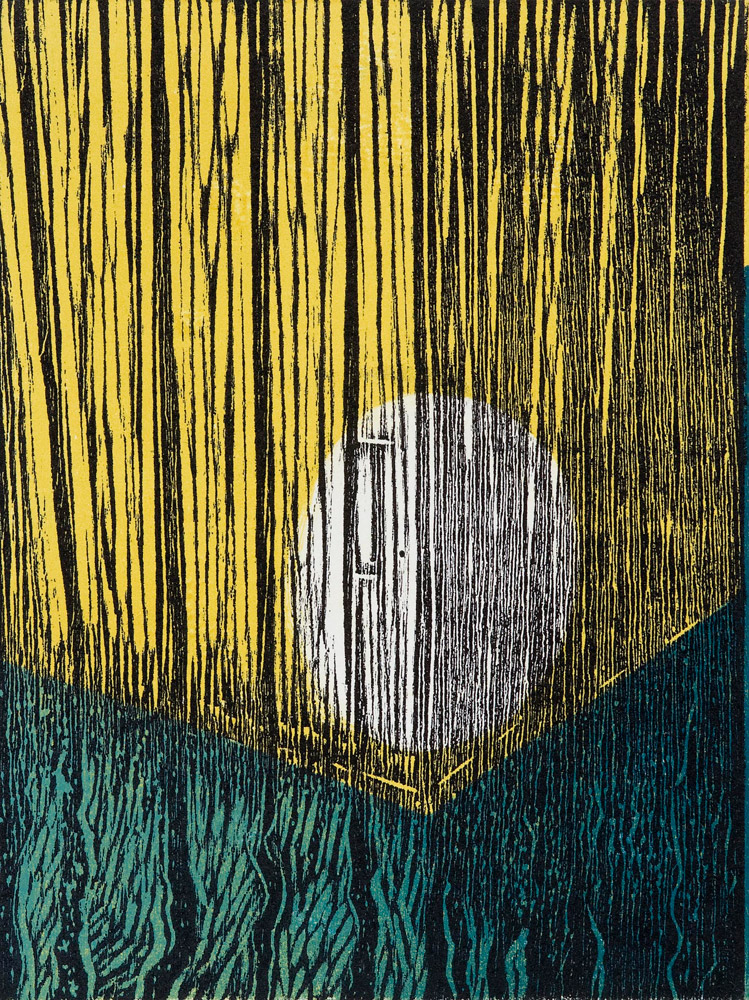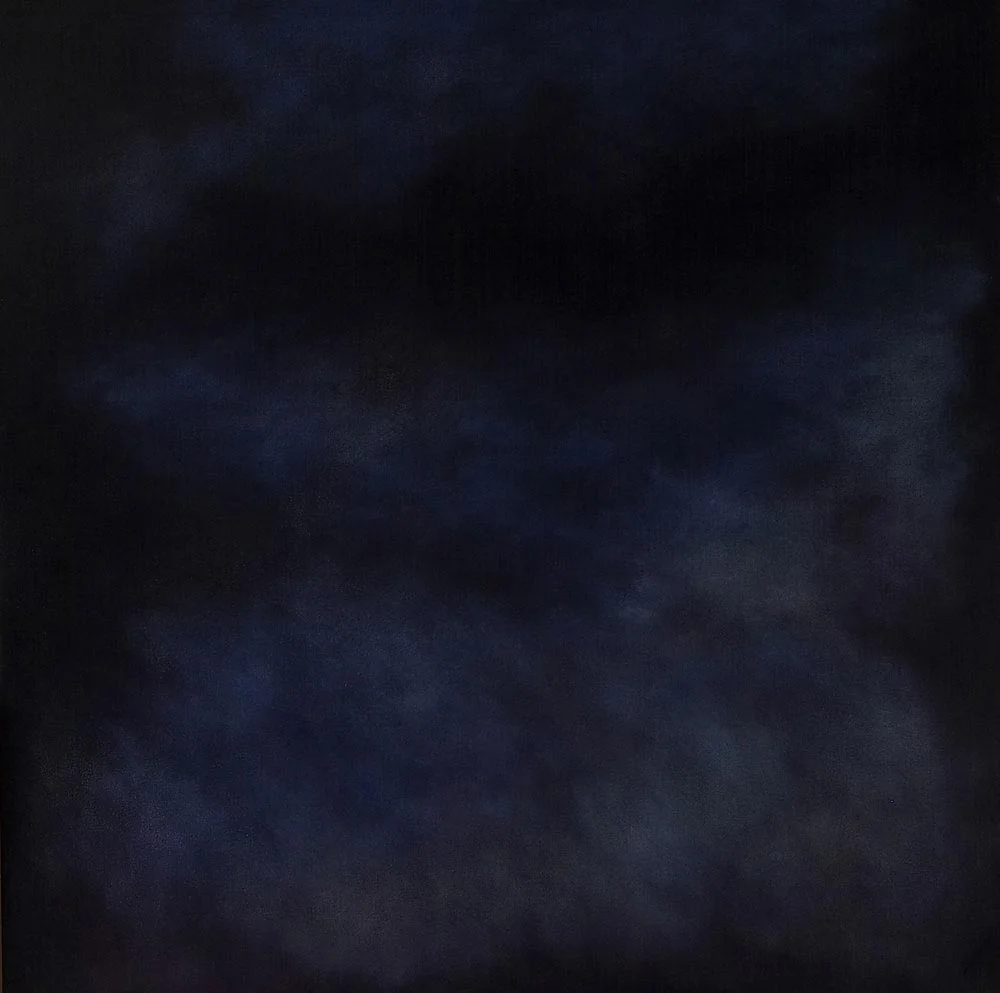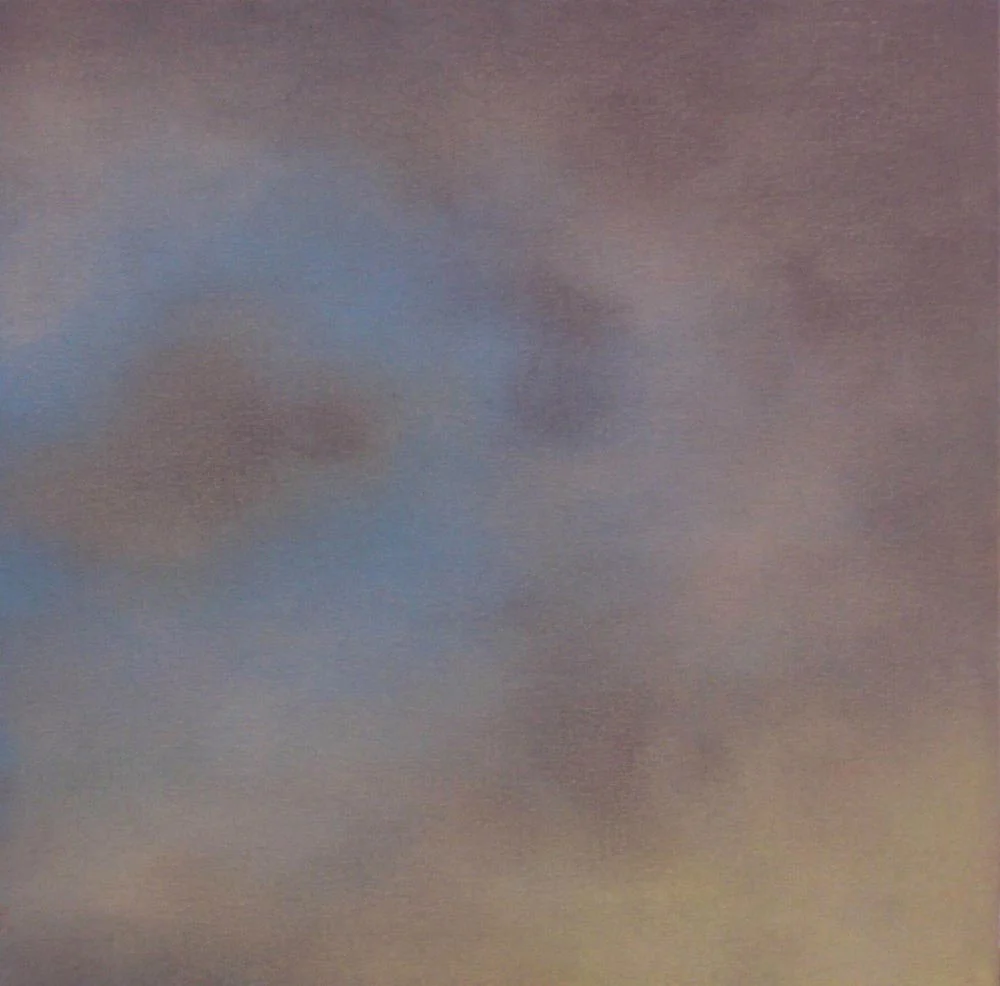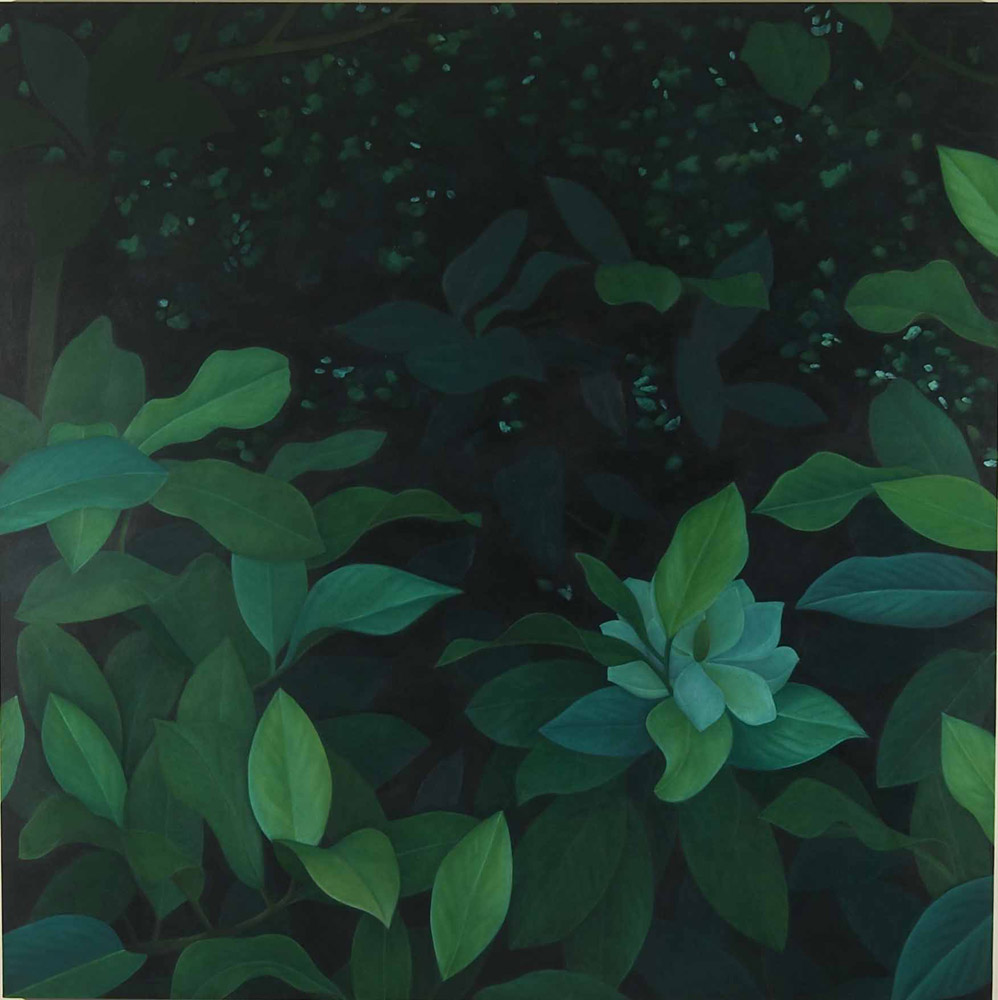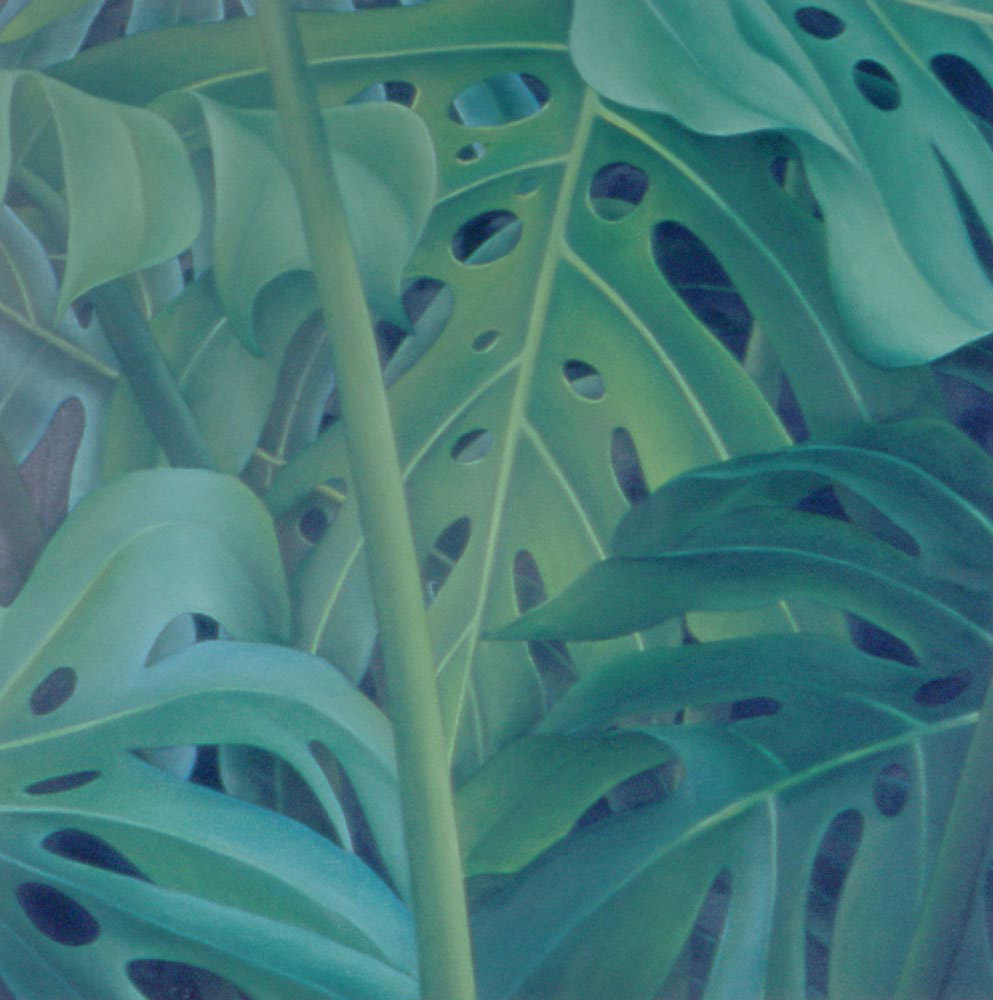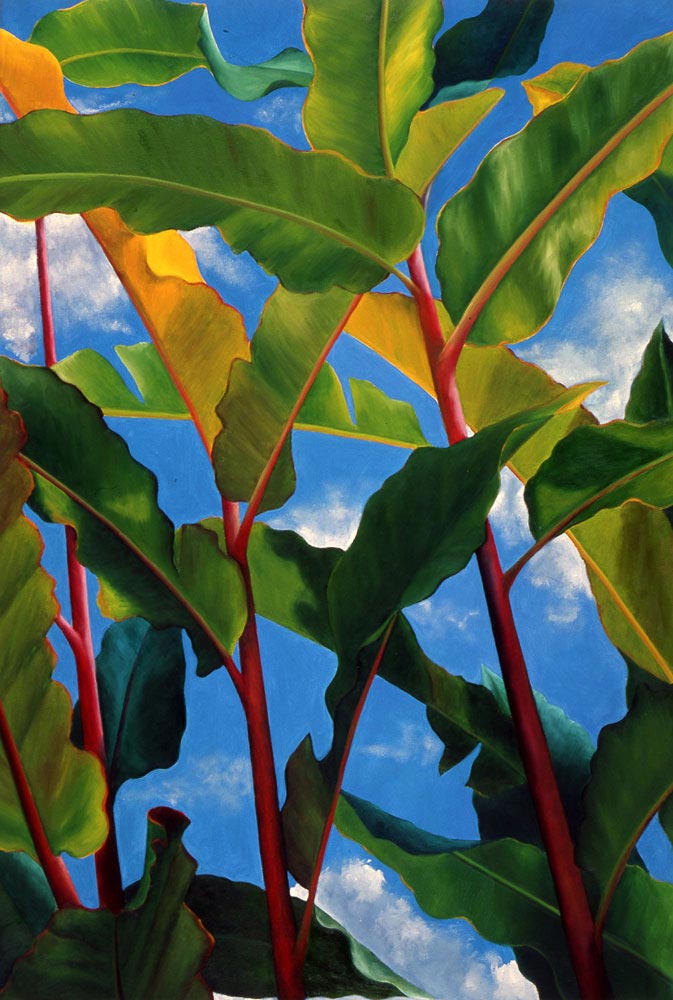Navigator
By Luis Fernando Peláez
Navigate the form of appropriation that Ana Isabel Díez makes of the landscape, and surf in silence, contemplating atmospheres that arise from within, as if waiting for a blanket of color that covers and discovers at the same time. It is the act of revealing only a sentiment of fragility in the air, in the water, in the islands that float on other banks, alone and naked, color and matter turning mild, almost dematerialized it is own, austere silence.
Sometimes the navigator, the viewer, finds fragments of unusual color adrift, areas of real and imaginary journeys where moments of color are more than warnings of emotional regions of the memory. They are the chronicles of other islands beyond the waters and journeys; they are pure painting that travels toward us, having become travelers in these worlds, where reason and emotion navigate.
Re-visions
By Luis Fernando Peláez
“Re–Visions” follows a principle that, after processes and elaborations of photographic and pictorial experiences, seeks to extend these languages. The photographic image pursues other fields, other times and spaces: this happens in the disturbing streets and cities of Elizabeth Arboleda, where the passer – by is the camera itself, a shift in places that also watch us. It is the here and now, beyond the photograph, closer to the look. Gloria Restrepo, from the movement of the ocean and through the static camera, from a fixed point, observes the stormy calm, the hidden force that follows these horizons turned into time itself, which lives and pounds in hidden spaces. Carmen Posada achieves a deep space, literally the depths of the Cauca River canyon, the bend along these mountains, the closest to the geography of her childhood, like the water that flows, triggering again another phase of photography, which – after capturing the image – recovers the fragile, passing idea of time and its ghosts.
These searches through photography have a parallel in the paintings of Ana Isabel Díez, in which the action of color is turned into atmosphere in small big formats that add – inch by inch – a world from where “the nature of nature” captures fragments from the essence: red skies, blue geometries, for a continuous map of the painting. Here reason and emotion announce something that is decanted in the plane, in a pure state.
From these cities, oceans and landscapes surge these instances with a new look at a world seen with amazement: always the same and always different.
These Re-Visions try to warn, at times like a shadow in the water, of an instant, a moment. Look again at the color of the fragility, or maybe the fugacity of color.
Atmosphere
By Felipe Montes
In Atmosphere, the artist seeks to realize her own temporality reflexively, in the On Kawara way, who makes a series of pictures in which nothing appears except the date painted on a black background. But Díez uses for her reflection, not the simple convention of the calendar, but what is vital to her: her proximity to the landscape where she lives, with the atmosphere she breathes. Recording the passage of time in the landscape is like synchronizing the pulse of he who contemplates (first the artist herself and then the spectator before the painting); the time of the look and the pulse of the landscape that slowly changes, second by second.
Atmosphere, Oil on canvas, Polyptych 25x25, 2008
Hours 04 - 06
By Leonel Estrada
In the present state of Art, it is not a matter of thinking if the changes and evolution are going to continue. If Pop Art and Op Art are still valid. What is between the Conceptual and the Art of Ideas or the painted painting? In the end what lasts forever, what remains is the earth we inhabit, and the nature that covers it: the trees, the green foliage and the light reflected on each leaf. Colors and the phenomenon of the reflection of light remain. The half – light and darkness alternating with the brilliance of sunrises and the tremendous nature of sunsets also remain forever.
This Exordium has arisen in looking at the work of the artist Ana Isabel Díez and her wisdom when she decided to work ecological topics in her paintings and to amuse herself in the plastic wealth of gardens and forests to communicate to us the unending, borderless beauty of her vegetations.
It was not, therefore, a coincidence that her work was highlighted with special distinction in the III Biennale of Florence, Italy in 2001. Nor is it a question of luck that her pictures arouse interest in Europe and have been acquired by collectors. This Colombian artist deserves these triumphs by showing the wisdom to choose her topics and translate them, with great taste and refined technique, on her flawless canvases.
Light and Space
By Carlos Arturo Fernández
The relationship develops within a context of multiple suggestions. On the one hand, it is an invitation to a direct, relaxed enjoyment of paintings, in which it is recognized that the decorative characteristic has been part of the essence of art throughout its history and is assumed without any false pretension of shame: A work that allows one to quieten and recover balance, much like that “good old chair” Matisse searched for in the creation of his works.
It is also clear that in order to achieve its intention, the work seeks our direct participation. Surely, it is in this direction that the “screens” with mirrors are to be understood; “screens” that are presented as isolable objects but that are visually and conceptually enriched as part of an “installed” complex – though not with the pretensions, in the strict sense of the word, of an “installation” – Walking before them or along them as if going through a labyrinth, we become part of their own structure, in such a way that the work integrates us with the world we are searching to know.
On the other hand, the density of the surfaces covered by vegetation that eliminates any possibility of perspective, implies, at the same time, the impossibility of “measuring” ourselves, with respect to the reality we are facing: We cannot reduce the microcosm of this tropical rain forest to our own dimensions; thus, it appears to us as a macrocosm, a universe of mystery and poetry among the possibilities of light and limits of space.
For, at the very core, the same basic problem of light within space is there as the essence of painting. That this work refers to a dimension of sense and not to a mere search for aesthetics is clearly revealed in the unusual series of plants on a golden background: Similar to ikons but without religious connotations, images in a pure sense, not representations, that live in their own reality. A reality that only painting can achieve through the creation of Light and Space.
Back to Surroundings
By Luis Fernando Valencia
According to Hegel, man transforms the material reality that surrounds him by means of a process which he, Hegel, calls “objectualization”. When this process does not lead to a humanization of our surroundings, the phenomena of alienation occurs. In this sense, art would be the objectualization per excellence, for its expression persists on making spiritual forces, human needs and ways of life more comprehensible.
Our current habitat has been mutated by technology; this highly technical environment has altered equilibrium conditions between man and nature. Loss of this harmonic relationship has modified existential situations, curtailed personal experiences inherent to every human being and exalted artificial ways of life for which the price has been loss of sanity.
In Ana Isabel Díez’s work, there is a process of objectualization of nature, because through her art, nature is humanized. Yes, art can transform nature into surroundings that are more humane. Through Ana Isabel’s work, we become aware of the presence of nature that it acts upon us. That is, we liberate nature from being just a superfluous addition, mere casual accompaniment.
But, this is not about invoking a late misunderstood romanticism of returning to paradise. It is accepting a technological world that has brought us multiple benefits, yet understand that we are in a historical period of “against nature”, an exacerbated “anti-natural” era, and that a pictorial gesture like that of Ana Isabel Díez’, who decidedly embarks upon the topic of nature, convokes us to survive in a de-humanized world.
Surroundings
By Leonel Estrada
Surrounded by vegetation, permeated by chlorophyll and pleasant aromas that come from the woods, lives Ana Isabel Díez, the young artist who after having received her Degree in Electronic Engineering, performed as a banking executive for a couple of years and trained for leadership in Madrid, opted for art submitting herself to the discipline of shapes and color, the study of space and perspective, and the hustle and bustle of canvases, turpentine, oil and oil paintings.
After returning from Europe, to Colombia, she quietly started the arduous task of capturing and pouring on to her canvases the full enchantment of the tropics. Without any haste to exhibit or let her work be known, she moved on, finishing her works one by one, until she finished putting together a series that conforms what we could call “Tropicalia”.
With the self-assurance of one who knows well what she is doing and the fruition of one who enjoys what she is engaged in, Ana Isabel has recently culminated some works that communicate optimism and enthusiasm for our natural patrimony. Different pictures in large formats; Creations that, within a refreshing atmosphere, show an array of green shades and daring contrasts with areas of profound red. These pictures of impeccable drawing, composition and color are contributions to a new “Botanical Expedition” in which gigantic leaves, stems and shoots radiate light and air.
Before this agreeable and solid composition, the spectator is filled with optimism and confirms that Ana Isabel succeeds in creating a personal plastic language, a different beauty from a new youthful conception. Painting that does not pursue to imitate daily reality but freezes another grand reality as if it were an unexpected flooding on a surface of poetic shades.

